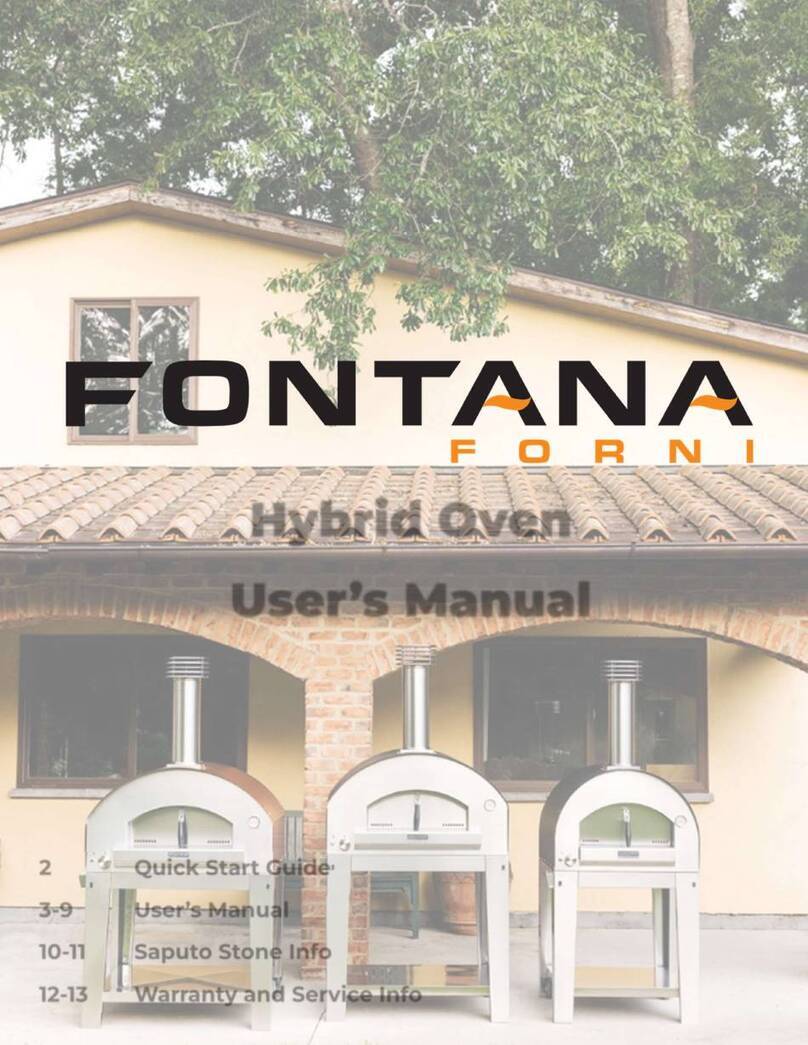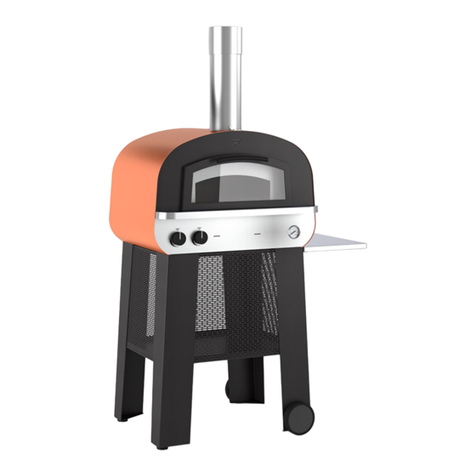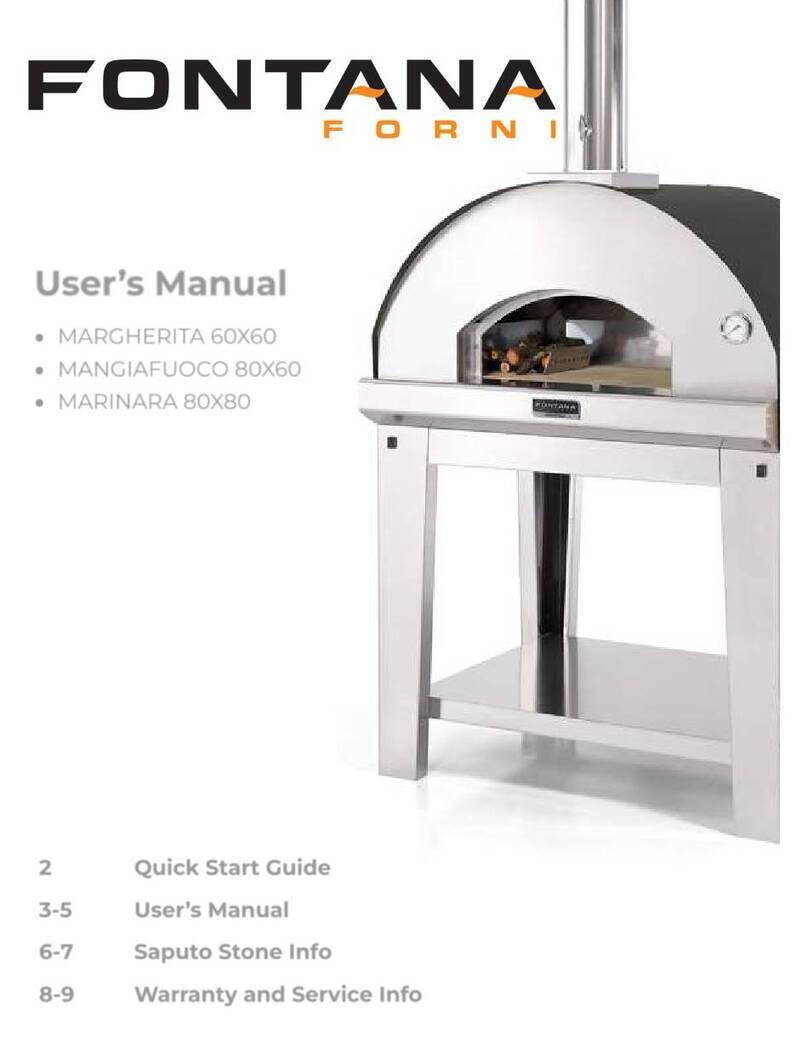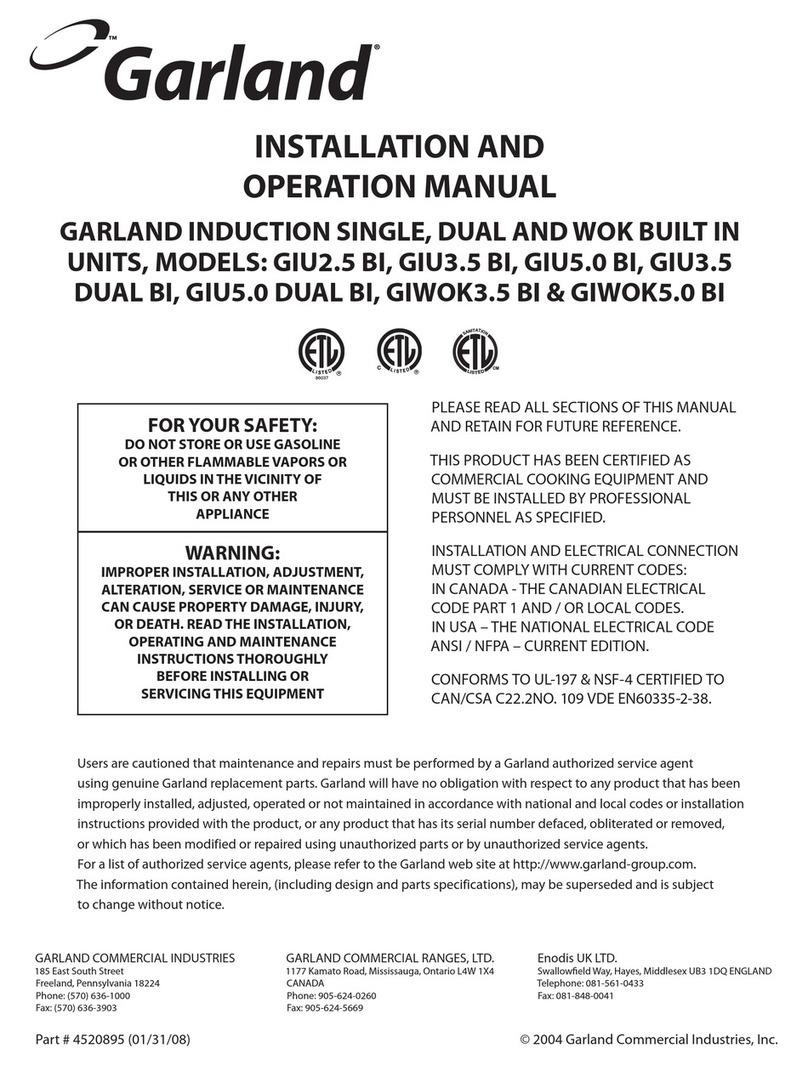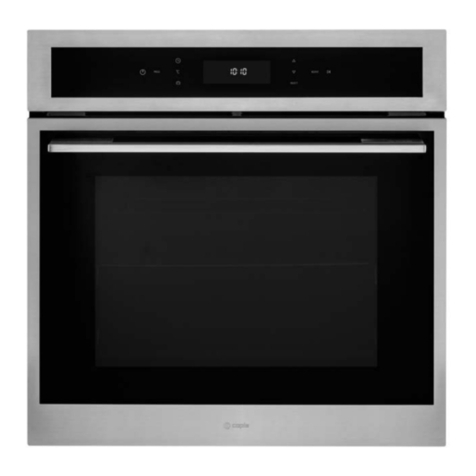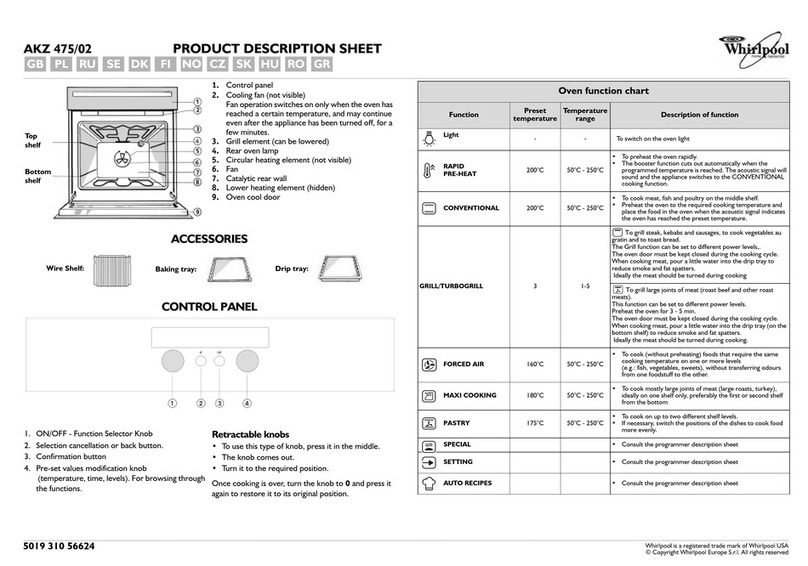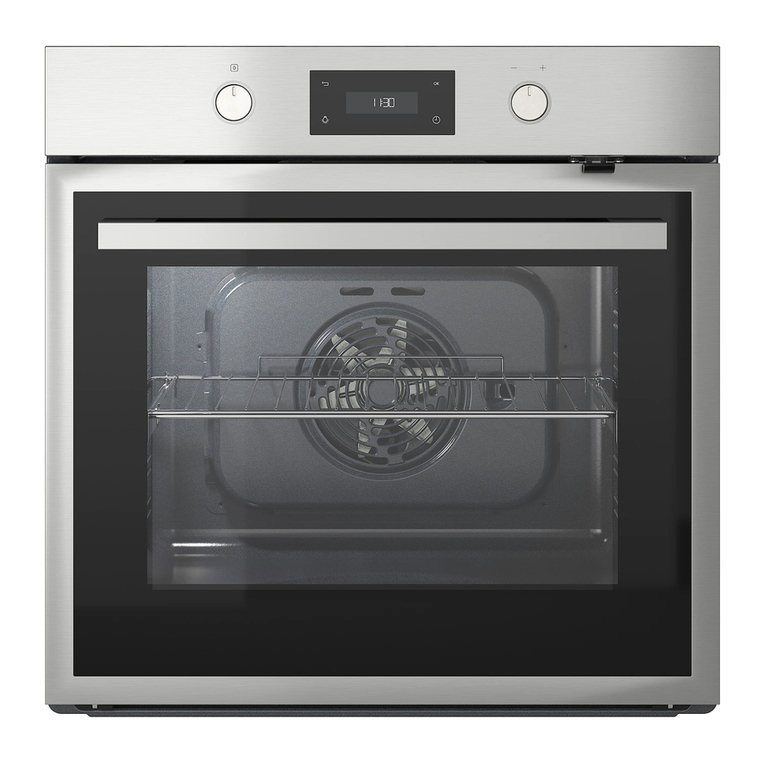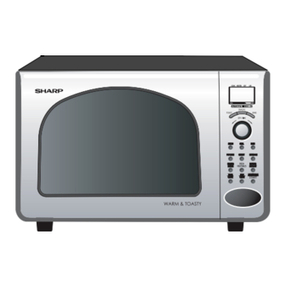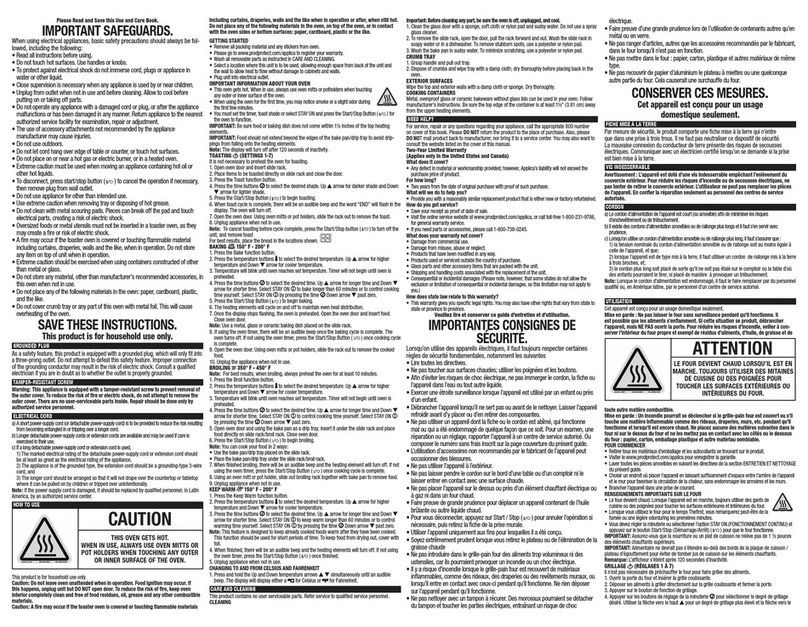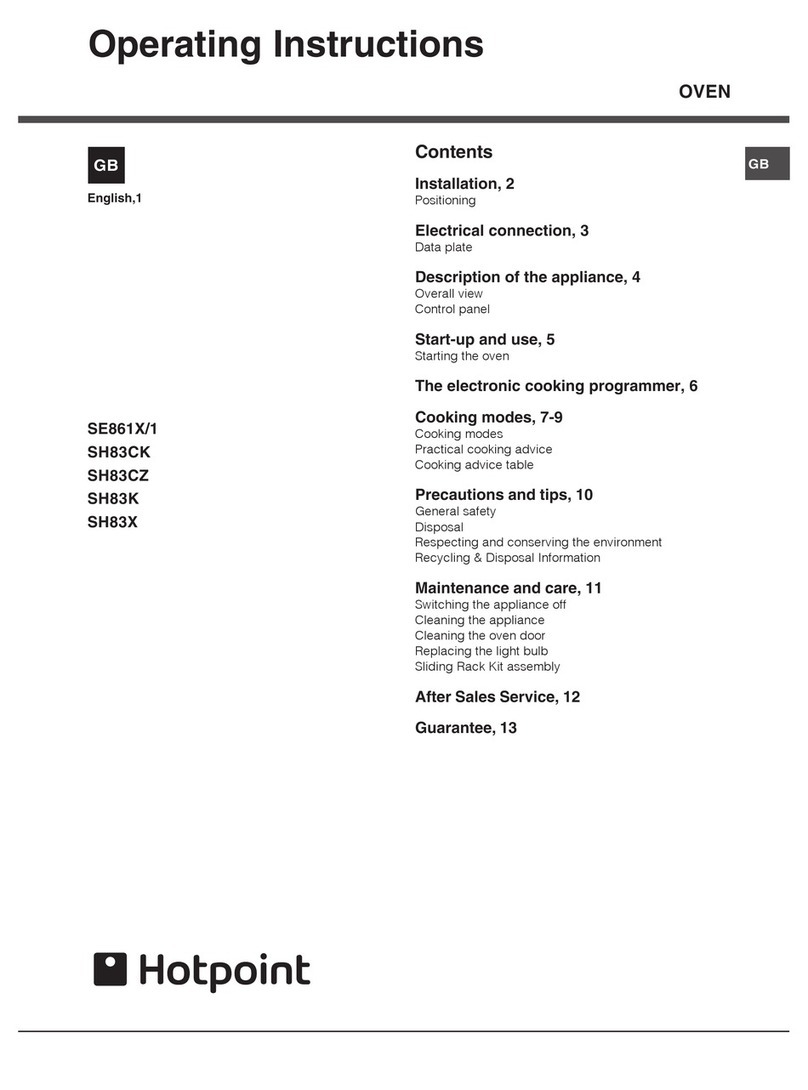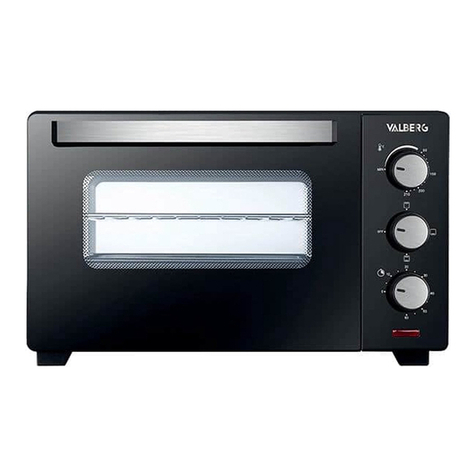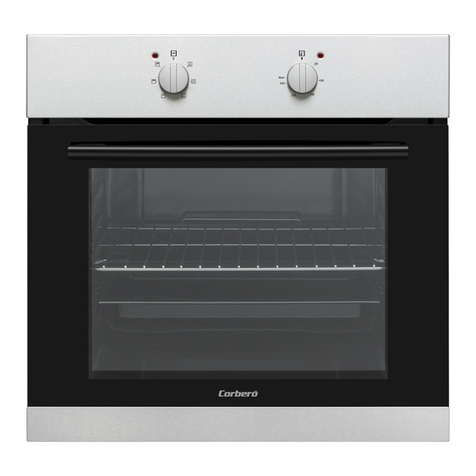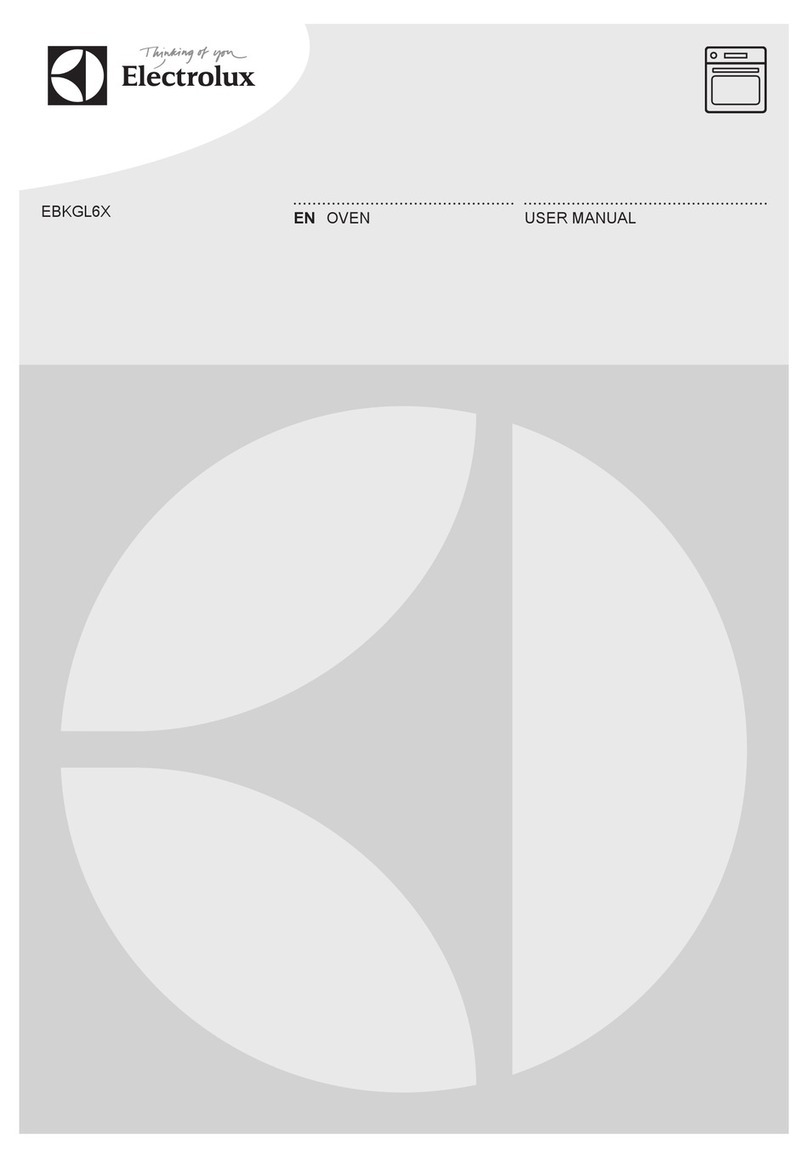All interventions must be carried out in safe conditions and with
the gas line closed and/or disconnected
WARNING: Improper connection as well as any alterations or improper maintenance
can cause material damage to property or persons and even death in extreme cases.
Read the instructions carefully before installing and using the appliance
- The identification plate, with technical data, serial number and marking is visibly applied
to the appliance. The plate must never be removed.
- Before operating the appliance, it is mandatory to remove all protective films present.
- Absolutely avoid the use of steel sponges and sharp scrapers to avoid damaging the sur-
faces. Use normal, non-abrasive products, possibly using wooden or plastic tools. Rinse
thoroughly and dry with a soft cloth or microfibre cloth.
- Do not use tableware or containers made of plastic material. The high temperatures rea-
ched inside the oven could melt this material, causing damage to the appliance.
- Use cutlery and tools that are resistant to high temperatures.
- Place the oven on a flat surface.
- Due to the temperature, the colour of the surfaces may vary.
- The installation of the product must ensure easy access for cleaning.
- Never put flammable objects in the oven: if it is accidentally switched on, a fire could
start.
- Do not allow children to approach the appliance during operation, DANGER OF BURNS
or to play with it even when off.
Do not insert sharp metal objects (cutlery or tools) into the slits of the appliance.
- The furnaces, although they have insulating material between the two layers of steel,
may overheat outside.
- Make sure the oven is positioned away from objects and materials that may be damaged
by heat. Do not place flammable materials in the area of the floor in front of the oven, pro-
tect the floor with fireproof material if it is made of flammable material.
- Do not store flammable material on the trolley shelf (if present) under the oven.
- Manoeuvre the door by holding the handle. - Do not touch the external surfaces and flue
while in use.
- Do not use flammable liquids near the oven.
- Keep any electrical cables and fuel supply pipes away from hot surfaces.
- Do not use the oven in case of abnormal operation or suspected breakage.
- Do not move the oven during use or when it is hot.
- Do not lean or place objects in the oven, their stability may be compromised.
- Do not use naked flames near the oven.
- In case grease catches fire, stop the power supply and leave the oven door closed until
CAUTION: If the gas oven is not used, close the gas supply valve
Do not store unused gas cylinders in the vicinity, even if empty.
the fire extinguishes.
- Wear heat-resistant kitchen gloves when using the oven.
- The parts sealed by the manufacturer must not be modified by the user.
- Do not leave the appliance unattended during cooking, which may release grease or oils.
Fats and oils may catch fire.
- Do not obstruct the openings, ventilation and heat disposal slots where present.
- During use, for ovens with integrated base (trolley), remember to lock the wheels with
the appropriate brake.
Read the entire manual before proceeding with installation. Failure to follow these pro-
cedures could result in damage to property and persons and possibly death. Contact
the competent authorities regarding any installation restrictions.
ONE OF THE MAIN CAUSES OF FIRE RELATED TO THE OVEN IS DUE TO FAILURE TO
COMPLY WITH THE MINIMUM DISTANCES FROM COMBUSTIBLE MATERIALS OR
INCORRECT INSTALLATION. IT IS VERY IMPORTANT THAT THIS OVEN IS INSTALLED
IN ACCORDANCE WITH THESE INSTRUCTIONS
FOR YOUR SAFETY: Do not deposit or use gasoline or other flammable vapors or liquids
in the vicinity of this or other appliances. Keep the area below and around the appliance
free of combustible materials.
CAUTION: Improper connection as well as any alterations or improper maintenance
can cause material damage to property or persons and even death in extreme cases.
GAS LEAKS MAY CAUSE FIRE OR EXPLOSION AND CAUSE SERIOUS OR FATAL
PERSONAL INJURY, OR PROPERTY DAMAGE.
CAUTION IF YOU SMELL GAS:
1. Immediately shut off the gas supply.
2. Extinguish any open flames.
3. Open the oven door.
4. Consult a specialist technician
GENERAL WARNINGS
KEEP THIS MANUAL FOR FUTURE REFERENCE
SAFETY WARNINGS
READ ALL INSTRUCTIONS BEFORE INSTALLING AND USING THE PRODUCT
READ THE FOLLOWING INFORMATION CAREFULLY FOR A CORRECT
INSTALLATION AND OPTIMAL OPERATION OF THE OVEN.
4 5
E N G
E N G












